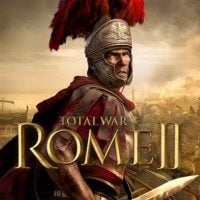Total War Rome 2: Characteristic Factions - Carthage
Carthage is the second and the last republic available in the game. This age-old Rome enemy begins the game having several colonies spread across the Mediterranean. The Carthago, capital of the country, is located in the North Africa and is surrounded by allies. In the north, on Sicily and Sardinia, there are two more colonies in the direct range of Roman fleet. The last one, Qart Hadasht, is located on the Iberian Peninsula and is in a constant threat of barbarian raids.
Due to locations of various regions, Carthage sooner or later will have to clash with neighbors. In Iberia you'll come across hostile Turdetani. In Africa local tribes sooner or later will attack your allies, whose defeat will open a way to your capital city. And expansion to the north sooner or later will be stopped by Roman military power.

Units available for Carthage are at most average. Both infantry and cavalry are able to defeat tribal units but will lose in fights with better trained and equipped Roman or Egyptian units. You'll have to rely on expensive mercenaries and in addition you'll have to develop economy and trade.
Starting bonuses
Starting bonuses for Carthage are focused on maintaining large numbers of mercenaries:
- Phoenician Trade Heritage: +10% wealth from all commerce buildings
- Mercenary Armies: -40% mercenary upkeep costs
In addition, depending on the chosen dynasty, you'll get two bonuses and one penalty.
Hannonid Dynasty:
- Pioneers: +10% movement range for all armies and fleets
- Statesmen: Minor diplomatic bonus with all factions (cultural affinity)
- Military Underdogs: +10% non-mercenary recruitment costs
Hannonids rely solely on mercenaries to rapidly conquer distant lands. While playing this dynasty you can have a lot of colonies far from each other and maintain good relations with your neighbors.
Magonid Dynasty:
- Military Reforms: -5% upkeep costs for all non-mercenary units
- Iron Fist: -20% resistance to foreign occupation
- Corruption: -6% tax rate
Reduced army upkeep costs are negated with decreased tax income but fortunately you still can have huge trade income. Magonid dynasty is very expansive and iron fist will allow them to more easily maintain newly conquered territories.
Barcid Dynasty:
- Agricultural Reforms: +5% wealth from agricultural buildings
- Popular Support: Public order bonus (maximum of +4) from presence of Punic culture
- " Punic Faith": Diplomatic penalty with all factions (cultural aversion)
Barcid dynasty is the equivalent to Roman Junii. Increases agricultural revenues and popular support facilitate country management and increase your income and punic faith makes it difficult to keep good relations with neighbors.
The most important available units
Libyan hoplites
One of the cheapest hoplites units available for Carthage. They have low morale and poor melee attack but their armor allows them to stand few hits.
Late Carthaginian hoplites
Heavy armored Carthaginian hoplites. They have heavier armors than their predecessors, thanks to that they are able to stop enemy until reinforcements arrive.
Sacred band
Elite Carthage infantry. They have the best armor in the game and high melee attack, so they are able to defeat any opponent, maybe except elite shock Roman units.
Libyan peltasts
Projectile units used to harass the enemy. They do not get fatigued under African sun, so they can fight for a longer period of time than their counterparts from other nations.
Libyan infantry
Shock infantry equipped with swords. They have better attack than pikemen but they are also worse armored. They are ideal to flank armored enemy units.
African pikemen
Cheap pikemen unit available for Carthage. Their effectiveness on the battlefield is not the best, but like any phalanx they can stop enemy and inflict considerable damage before they are defeated.
African elephants
The most important Carthage unit, used to break enemy lines and to trample enemy troops. You should use war elephants any time it is possible to strengthen your army.
Carthaginian cavalry
Auxiliary unit used to smash skirmishers and light infantry. Unfortunately it is not good to stand against enemy cavalry or pikemen.
Carthaginian ballista
Distance support for Carthaginian army. War machines, just like elephants, partially make up for shortage of effective infantry and cavalry.
You are not permitted to copy any image, text or info from this page. This site is not associated with and/or endorsed by the developers and the publishers. All logos and images are copyrighted by their respective owners.
Copyright © 2000 - 2025 Webedia Polska SA for gamepressure.com, unofficial game guides, walkthroughs, secrets, game tips, maps & strategies for top games.
